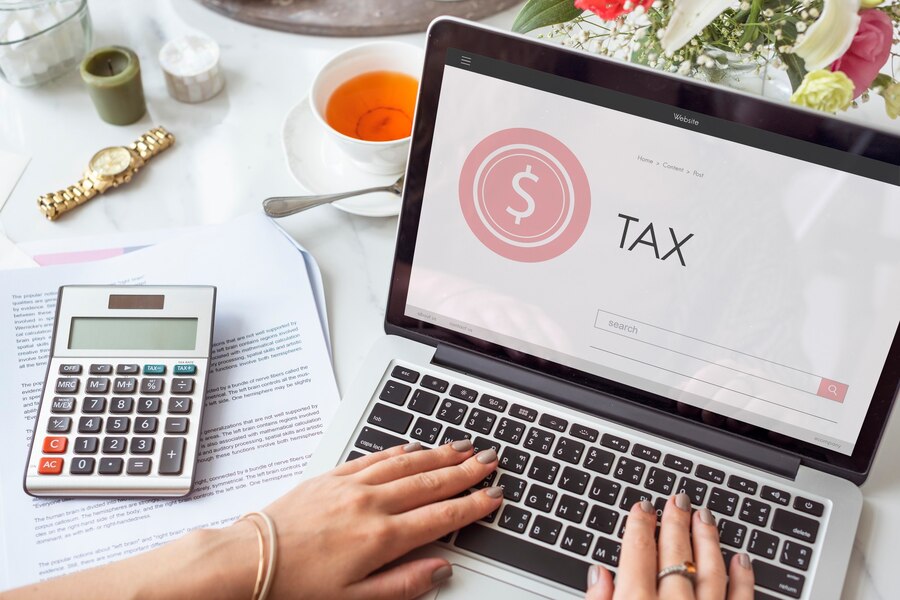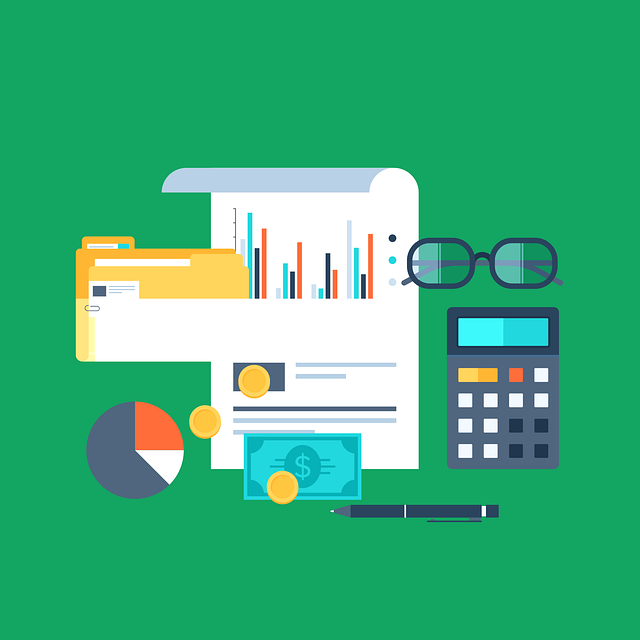In today’s digital age, apps offer convenience and efficiency in every aspect. The tax filing process, no doubt, is a civic and legal responsibility, but it is an arduous task for laymen and businesses alike. Tax preparation apps come in useful to streamline tax filing processes, helping users to manage taxes in a practical and reliable way. These apps simplify tax-related responsibilities with paramount features such as: user-friendly interfaces, safe document storage, and real-time updates on the most recent tax laws. Moreover, tax preparation apps save time and offer speed, accuracy and efficiency.

Developing a tax preparation app will be well-spent as it is a need for most people and businesses. If you’re planning on these lines, you must consider the most important factor that is “the cost of building a tax preparation app”.
Various factors influence the overall cost of a tax preparation app. These include technology stack, platform, design considerations and features complexity. In this article, we’re going to provide in-depth insights into the cost of developing such an app. Continue reading to pre-decide the budget about building an innovative and robust tax preparation app.
What is a Tax Preparation App?
A tax preparation app enables users to perform integrated tax services and functions in a hassle-free way. It provides guidelines about technical jargons and acts as a tax consultant for the user. A tax preparation application comprehends taxpayers duties related to tax filing and allows them to stay-at-home and file their taxes from their smartphones. It is an all-inclusive tax paying solution, preferred for its effectiveness, perfection and time saving features.
How a Tax Preparation App Functions?
It’s certainly needed by law to submit an annual tax return with the Internal Revenue Service (IRS) if you make money and live in the United States or if you are a citizen of the United States. Using tax software is one of the most economical and accurate ways to file your taxes. You can e-file your state and federal tax returns by entering financial data, such as your self-employment or W-2 income.

It won’t be wrong to say that tax preparation apps work as your tax manager or organizer. These apps save taxpayers from the vexation of manual tax calculation and automate the process, offering up-to-date guidelines about tax regulations. Tax software will compute your estimated tax liability or refund amount automatically when you enter your tax information on your W-2s, 1099s, and other forms.
Interview-based and form-based tax software are the two types of tax preparation apps that are now generally available. The easiest to use and most often utilized kind of tax software is interview-based. You don’t have to be aware of the precise location on the tax return where a certain piece of information must be disclosed. Rather, the software that is based on interviews streamlines the procedure by posing queries and delivering accurate data at the appropriate locations. Conversely, tax software that is based on forms imitates the structure of different tax papers and forms. It asks you to enter the accurate data from the matching boxes on your tax records.
Key Developmental Stages of a Tax Preparation App
Before discussing cost variables of creating a tax preparation app, we’ll delve into the important developmental stages that determine the cost in the first place.
1: Begin Your Research from the Scratch
The process of building a tax app begins with researching the local users’ needs. Find out a USP that must be a part of your app to help it stand out from the competition. Your app development cost highly depends on the set of features it is built upon. Keep your budget in mind and then choose a balance between cost and benefits (that your tax software will offer to its users).
2: Keep Your Potential Audience in Mind
When developing an app for tax preparation, the first thing you should consider is the demographic of users you are targeting. Understanding what your customers need makes development easier and produces a better final product. Find out everything you can about your potential customers.
You could start by researching the following:
- Find out what your users’ average age is, where they live, and what technology they use.
- Identify behavioral patterns to use technology. Find out what discourages users from downloading an app, what security expectations they have, etc.
- When conducting research for your product idea and choosing how to build a tax preparation software from scratch, you should determine who your target market is. Identify your target market’s age, geography, financial bracket, and interests—you also need to take into account the sheer number of app users.
- Once you’re done with the primary research and have now come up with a notion of your chosen features and app functions, create a pilot product/prototype. The best is to build an app that suits your target market requirements.
- Further, testing your tax preparation app on the actual users is essential. It will fade out unnecessary features and clear the map for the real design and development.
3: Start Developing Your App
Sketch out your app features and begin with the development phase. The best strategy is to go with a low-budget, and basic version of the tax preparation app. It will be less risky if you fail. And if the app appeals to the potential users, you can expand features and launch a feature-rich application.
Developing a tax preparation app sometimes requires weeks and months. If you hire a business analyst to determine the platform’s functional features, your headache will be reduced. Your tax preparation app’s UI/UX design is based on the results of the business analysis, and it will be used to build the app from the ground up.
4: Set Up Pricing Structure
The price point of your app should be comparable to its rivals. Charging too much is the riskiest and charging too low would be unfair for the developer / app development company. Some tax preparation apps charge a fixed price for their apps, whereas others beef up the price for extended features. You may choose to select what suits your app audience and your app pricing strategy.
5: App Marketing, Updates & Maintenance
App development efforts will not suffice if you don’t market your app on the right promotional channels. Similarly, it is not enough to only know how to make an app for tax preparation. You also need to know how to plan app maintenance and support with the updated financial laws.
Factors Influencing the Cost of Developing a Tax Preparation App
There are special queries among people about the cost of a tax preparation app. Here are some of the variables on which this cost depends.
- Interface of the application
- Level of complexity of app
- Verification of security of data
- Frequent consultations

1. Interface of User Application
The importance of a UI plan is impossible to misinterpret in perspective a user centric app interface. The consistency of a user’s experience relies on a properly organized and an easy to understand interface for the user. This increases the chances of user engagement with the app and lets the user explore the assessment recording process easily presuming that this app is designed in accordance with their needs. So, designing and developing such an interface which is user-friendly and demands engagement of user, requires capital investment on qualified plan and organized staff, who could drive the cost of general tax preparation app.
2. Level of Complexity
Development of a tax preparation app becomes complicated in order to maintain compatibility with competitors. To keep the top position a flawless development of apps is needed. This includes customization of iOS, web and Android at every stage. This involves accommodation of user interface, increasing the performance efficiency, and noting the specific programs needed for constant drive of development cost.
3. Validating Data Security
As tax apps handle delicate monetary information, security of data is the main concern. For this instance, establishment of strong security protocols is required to ensure the security, hence gaining users’ confidence. Meticulous security standards are required to fulfill security demands. This needs more work and assets to create and coordinate, which could bring more expenses.
Though, as the application turns into a caretaker of monetary data, the requirement for integrating solid information security is fundamental for protecting clients’ confidential details. It maintains the application’s credibility as a reliable and moral controller of sensitive monetary data.
4. Frequent Consultations
The recurrence of engrossing in a CPA for services, e.g. monthly, quarterly, or yearly, can influence the overall expense. planning tax meetings, consulting via mobile phones, or independent projects handling (like amendment of an old tax form) are all the extra expenses which are charged separately.
Hourly discussions and meetings, are generally linked to company’s hourly bill rates and are paid notwithstanding the expense of the tax return deliverable.
Final Thoughts
In a nutshell, the cost of developing a tax preparation app is affected by various variables. A tax preparation software is not your ordinary app. It is developed by careful planning, design details, user requirements, and sometimes even consultation with experienced app developers is required. So, we cannot state a fixed figure of building a tax application. Everything comes down to what your intended users prefer, your chosen design and app features and time frame, security measures of your app and compliance with regulations and security guidelines.
If you want to develop a robust, and user-friendly tax preparation app in your budget, contact Stackup Solutions right away. We always cater to the factors affecting the cost of a tax app and keep you on board with continuous development updates.



.jpeg)